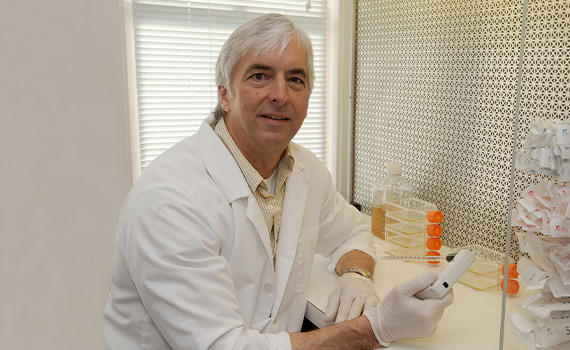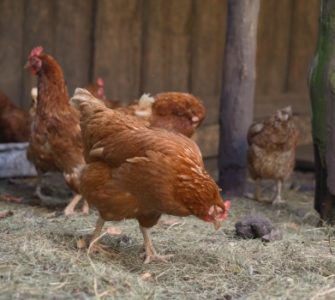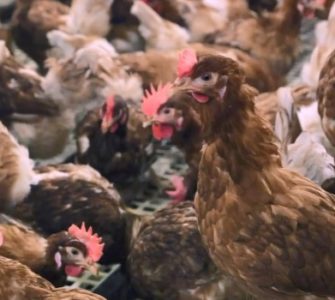Backyard flocks biggest risk for spreading vvIBDV in US
By
Daral J. Jackwood, PhD
Professor, Department of Veterinary Preventive Medicine
Food Animal Health Research Program
Ohio Agricultural Research and Development Center
The Ohio State University
Infectious bursal disease (IBD), commonly known as Gumboro, is an immunosuppressive disease in chickens caused by infectious bursal disease virus (IBDV).
A wide range of IBDV pathotypes exist in nature. They have been generally classified into subclinical IBDV (variant), classic virulent IBDV and very virulent IBDV (vvIBDV) groups. Although vvIBDV does not exist in some countries, phylogenetic studies indicate these highly pathogenic viruses have spread to nearly all poultry-producing countries of the world, including the US.
In December 2008, a California layer flock experienced high mortality in two houses. An IBDV was isolated from the bursa of birds from the flock submitted to the California Animal Health and Food Safety Laboratory for testing by Drs. Simone Stoute, Bruce Charlton and Peter Woolcock. Molecular characterization performed in my laboratory at The Ohio State University indicated the virus had a genetic sequence typical of vvIBDV.
Because there was some concern that the virus identified in these layers was not vvIBDV, the pathogenicity of the virus was determined in specific-pathogen-free (SPF) layer chicks to prove that it was, in fact, a true vvIBDV. Mortality in the SPF layers ranged from 90% to 100% and occurred within 4 days of challenge. These birds had the typical hemorrhagic bursas and skeletal muscle hemorrhages found with vvIBDV infections (Figures 1-3).
The molecular characteristics of the California vvIBDV indicated it was a close relative to the vvIBDV found in Europe. This was surprising because the prevailing thought was that the virus entered the US by way of South and/or Central America. Our laboratory had found vvIBDV in most countries of South America and as far north as the Dominican Republic, but molecular epidemiology conducted at my laboratory and investigations by Dr. Maurice Pitesky at the University of California-Davis pointed toward Europe as the origin of this vvIBDV strain.
Contained US spread
The vvIBDV was initially identified in Europe over 30 years ago and quickly spread around much of the world. After the virus was found in California, the expectation was that it would quickly spread across the US, but that hasn’t happened. Although we would like to think that biosecurity has played a role, there may be several explanations for the contained US spread, judging by experiments we’ve conducted.
A combination of maternal immunity and competition with endemic IBDV, particularly the antigenic variant strains, seems to reduce mortality and the hemorrhagic signs observed in vvIBDV-infected chickens. We have observed that if a pathogenic variant strain of IBDV breaks through maternal immunity and causes lymphocyte depletion in the bursa, the loss of host cells severely restricts the ability of vvIBDV to replicate and cause disease.
Our molecular epidemiology studies in the US indicate that evolutionary forces at work for over half a century have selected for antigenic changes among IBDV strains. Antigenic drift among the viruses allows them to break through maternal immunity when chicks are still very young, which results in the lymphocyte depletion that inhibits the ability of vvIBDV to infect flocks.
Role of backyard poultry
Although vvIBDVs are not spreading rapidly in California, numerous cases of vvIBDV in commercial layers and broilers have been documented in Northern and Southern California. In addition, my collaboration with Dr. Beate Crossly at the University of California-Davis has shown that vvIBDVs are infecting backyard poultry in California. The viruses have become established in these backyard birds and have evolved through genome reassorting with endemic IBDV strains. This is an important finding because it suggests the vvIBDVs have been present in US backyard poultry longer than predicted from the initial layer outbreak at the end of 2008.
Movement of backyard poultry appears to be responsible for the recent outbreak of IBD in a commercial layer flock in the state of Washington. The virus identified in that outbreak was genetically similar to a genome-reassorted vvIBDV found in a backyard flock in California. This virus caused unusually high mortality in the Washington state layers, and in our studies, it caused 90% mortality in SPF layer chickens.
The vvIBDVs are not causing widespread disease in the US, but they are on the move and evolving. The role of backyard poultry as a reservoir for the viruses is a major concern, as demonstrated by the outbreak of the reassorted vvIBDV in Washington state.
Vaccination ‘crucial’
Experience with IBDV in the US has taught us that biosecurity alone is not an effective control. Vaccination of breeder flocks to produce maternal immunity in their progeny is crucial for IBD control. Maternal immunity should closely match the antigenicity of the field virus challenge. The use of recombinant HVT-IBD or live-attenuated vaccines can also be effective when those vaccines match the field virus challenge.
Unfortunately, many backyard flock owners do not vaccinate their birds for IBDV. The unrestricted movement of backyard poultry is probably the biggest risk factor for the spread of vvIBDV to even more bird-dense regions in the US, where its containment may be more difficult than we’ve seen so far on the West Coast.
Control of IBD and, in particular, the vvIBDV in backyard flocks will require education of flock owners so they recognize the problem and take steps to prevent the spread of vvIBDV to other backyard flocks and to commercial poultry. Vaccination of commercial and backyard poultry flocks for vvIBDV will be critical to controlling the spread of the virus that causes this acute disease. However, it is not clear which vaccines available in the US are able to control vvIBDV. More research is required in this area and the development of vvIBDV-specific vaccines may be needed.
Posted on October 17, 2016





















